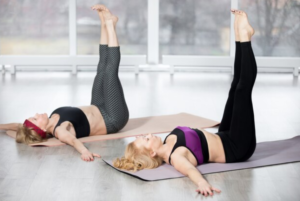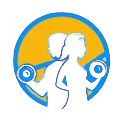Welcome to the world of Pilates, where power and proper form come together in beautiful ways. In this detailed guide, we look into the details of Pilates moves and show you how they can completely change your body for the better by building your Core and lining up your body correctly. It does not matter if you have done Pilates before or if this is your first time trying it. Get ready for a trip that goes beyond normal workouts and shapes your body and mind.
How to Understand Pilates Moves
Figuring Out Pilates Moves
Joseph Pilates created the Pilates movement in the early 1900s. They focus on controlled, exact actions that help build strength, flexibility, and endurance. In contrast to other types of exercise, Pilates focuses on the mind-body link, making each action deliberate and purposeful.
The Most Important Link
The Core is an important part of Pilates. The Core is the muscles you can see in your stomach and the whole muscles supporting your spine and hips. Pilates moves work on and improves this Core, which builds a strong base that sends power to every part of the body.

Pilates Moves’ Health Benefits
Strengthening the Core
People love Pilates because it can change the Core. Exercises like the Hundred, Roll-Ups, and Leg Circles work the core muscles, making a powerhouse that looks toned and works more steadily.
More adaptability
Even though strength is important, Pilates also puts a lot of emphasis on flexibility. Adding dynamic stretches to moves like the Saw and Swan Dive makes you more flexible, which is important for keeping your body balanced and mobile.
Better alignment and posture
Body balance is very important when doing Pilates moves. Spine Twists and Swans are exercises that work on articulating the spine, which helps with balance and posture. These changes not only make things look better, but they also make falling less likely.
Key Pilates moves for aligning and strengthening the Core
The Hundred
This is the classic Pilates move where you keep your legs on a table and do regular arm pumps. This dynamic workout works the Core from head to toe and builds strength and stamina.
Like a Ball Rolling
Rolling Like a Ball tests how well your Core can control your movements. It includes moving back and forth steadily and carefully, working the deep abdominal muscles, and making you more stable.
Swan Dive
The Swan Dive is a back-extension exercise that makes the spine more flexible and improves the whole back. It is a smooth but effective practice that can help you stand up straighter.
Adding Pilates to Your Daily Life
Keep things the same
The best way to get results from Pilates is to do it regularly. Try to make it to at least two or three weekly classes to get the most out of them. By practicing regularly, you will build your strength over time and become more aware of your body.
Pilates with mats vs. Pilates with equipment
Mat Pilates supports your body weight, while equipment-based Pilates uses tools such as the Reformer. Both methods have their benefits, and the one you choose will rely on your taste, how easy it is to get to, and your exercise goals.
Moving with awareness
Pilates puts a lot of focus on moving with awareness. Please pay attention to the quality of each action instead of the number of them. This systematic approach improves your health and helps you become more mindful and aware of your body.
Pilates for People of All Fitness Levels
Movements that are easy for beginners
Adaptations are offered for Pilates so that people of all physical levels can do it. Beginners can start with basic moves like the Hundred and the Pelvic Curl. They can move on to more difficult routines as their strength and confidence grow.
Challenges for advanced Pilates
Movements like the Teaser and the Corkscrew make Pilates more difficult for people who want to improve. You need to be strong, flexible, and able to control your movements to do these exercises precisely.
Pilates to Help with Recovery
Pilates has become very popular in rehab centers. Its focus on core strength and balance, along with the fact that it is low-impact, makes it a good choice for people who are healing from injuries or who want a gentle exercise that will change them.
Pilates and the Mind-Body Connection
Coordination of Breath and Movement
Pilates puts a lot of emphasis on coordinating your breath with your movements. Proper breathing increases oxygen flow and helps you control and be more precise in your exercises by strengthening the link between your body and your breath.

Focusing your mind and lowering your stress
Controlled, purposeful moves in Pilates require you to concentrate. Beyond the workout, this awareness helps reduce stress and promotes a sense of calmness beyond the exercise mat.
Conclusion
In the world of exercise, Pilates is a great example of how strength, flexibility, and proper balance can work together in a very good way. Pilates is more than just a workout; it focuses on mindful involvement, core-focused routines, and purposeful moving. As you start Pilates, enjoy the slow, deliberate moves, the link between your mind and body, and the changes in your body and general health. Pilates is not just a set of moves; it is a way of life that builds strength, flexibility, and balance, making you healthy and more energetic.
FAQ:
How does Pilates make your Core stronger?
Through exact moves that work both the superficial and deep stabilizing muscles in the abdomen, Pilates works the Core. The Hundred, Roll-Ups, and Leg Circles are all exercises that work the Core and make it stronger, more stable, and more durable.
What are Pilates’s five main moves?
The Hundred is a classic core exercise involving regular arm pumps while keeping your legs on a table. This works your whole Core.
Rolling Like a Ball: This exercise tests your core strength by having you roll in a controlled way, working on your inner abdominal muscles and making you more stable.
The swan dive is a back-extension exercise that strengthens the whole back, increases spine flexibility, and helps improve balance.
The pelvic curl works the lower back and hips, which makes the spine more flexible and the Core stronger.
Teaser: A difficult move that tests your core strength and control and requires you to move smoothly from lying down to sitting up.
What are the four muscles that make up the Core?
Rectus Abdominis: This is the superficial muscle that gives you a “six-pack,” it works when you do exercises like crunches.
It is the deepest abdominal muscle and is important for core stability. Pilates routines that focus on control and accuracy work this muscle.
Obliques: The external and internal obliques help with twisting actions and make the Core stronger and more flexible.
The multifidus is a deep muscle that runs along the spine and helps keep your stance and balance when you do Pilates moves that involve articulating your spine.
What are the main ideas behind Pilates?
Breath Coordination: Pilates focuses on coordinating breath with exercise to improve oxygen flow, keep muscles active, and make people more aware.
Concentration: Paying close attention to each move ensures accuracy, control, and a stronger link between the mind and body.
Control: Pilates moves focus on slow, deliberate movements that help engage muscles and stop workouts from being driven by motion.
Precision: Doing each action exactly right is a basic concept that ensures the right muscles are worked and prevents strain or injury.
Centering: In Pilates, the Core, also called the body’s center, is the most important part. The Core is where movements start and where they improve. It is also where overall power and alignment start.

